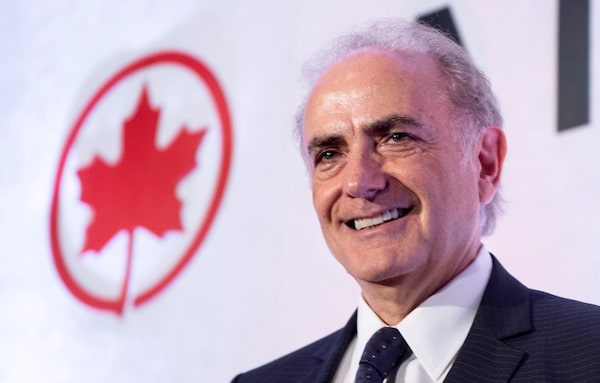
Air Canada president and CEO Calin Rovinescu arrives for the airline's annual meeting Monday, April 30, 2018 in Montreal.Paul Chiasson/The Canadian Press
Air Canada will expand the domestic offerings of its Rouge discount brand this summer as the competition from ultralow-cost carriers heats up over Canada’s skies.
As Flair Airlines increases its service and WestJet Airlines Ltd. introduces its Swoop ultralow-cost unit, Rouge will add flights between Montreal and Victoria, and between Toronto and the B.C. cities of Nanaimo and Kelowna.
The moves come as Air Canada increases the number of planes in the Rouge network to 53 from 50 after an agreement with its pilots last year permitted the expansion of the brand.
The introduction of Rouge – with its lower operating costs than Air Canada’s mainline service – on those routes is also part of a new effort to cut expenses amid higher fuel prices that hit Air Canada during the first quarter.
“When we are in cost-reduction mode, we’re going to look at all opportunities,” Air Canada chief executive Calin Rovinescu said Monday.
“Think of it as an additional tool in our cost-transformation program arsenal that we can deploy Rouge on regional routes,” Mr. Rovinescu said during a conference call on the first-quarter results. The program is designed to trim costs by $250-million.
The larger Rouge Airbus planes can replace smaller regional aircraft on many regional routes, thus reducing costs.
Between Halifax and St. John’s, for example, Air Canada operates five to six flights a day, but using larger planes, it could reduce that by one or two flights depending on the season, Ben Smith, Air Canada’s president of passenger airlines, said on the call.
Air Canada has also expanded its economy fare offerings, including a rock-bottom basic fare, as a means of fighting back against increased competition in the domestic market.
“The basic fare was put in to have something ready in case we need to use that fare surgically in certain domestic markets,” Mr. Smith said.
That fare will not be available across the board, he said, but “we’ll use it when and where necessary.”
Air Canada carried more passengers in the first quarter than it did a year earlier, but it cost the airline more to get them to their destinations, leading to a loss of $170-million, or 62 cents a share, compared with a loss of $13-million, or 5 cents, a year earlier.
Fuel costs rose 16 per cent to 73.3 cents a litre from 63.2 cents in the first quarter of 2017.
“We are dealing with that by raising prices where we can [and] by accelerating cost reductions where we can,” Mike Rousseau, Air Canada’s chief financial officer, said on the call.
The airline expects fuel prices to average 77 cents during the second quarter and overall costs per available seat mile to rise between 0.5 per cent and 1.5 per cent.
It is expecting costs for the full year to range between a drop of 0.5 per cent and an increase of 1 per cent.